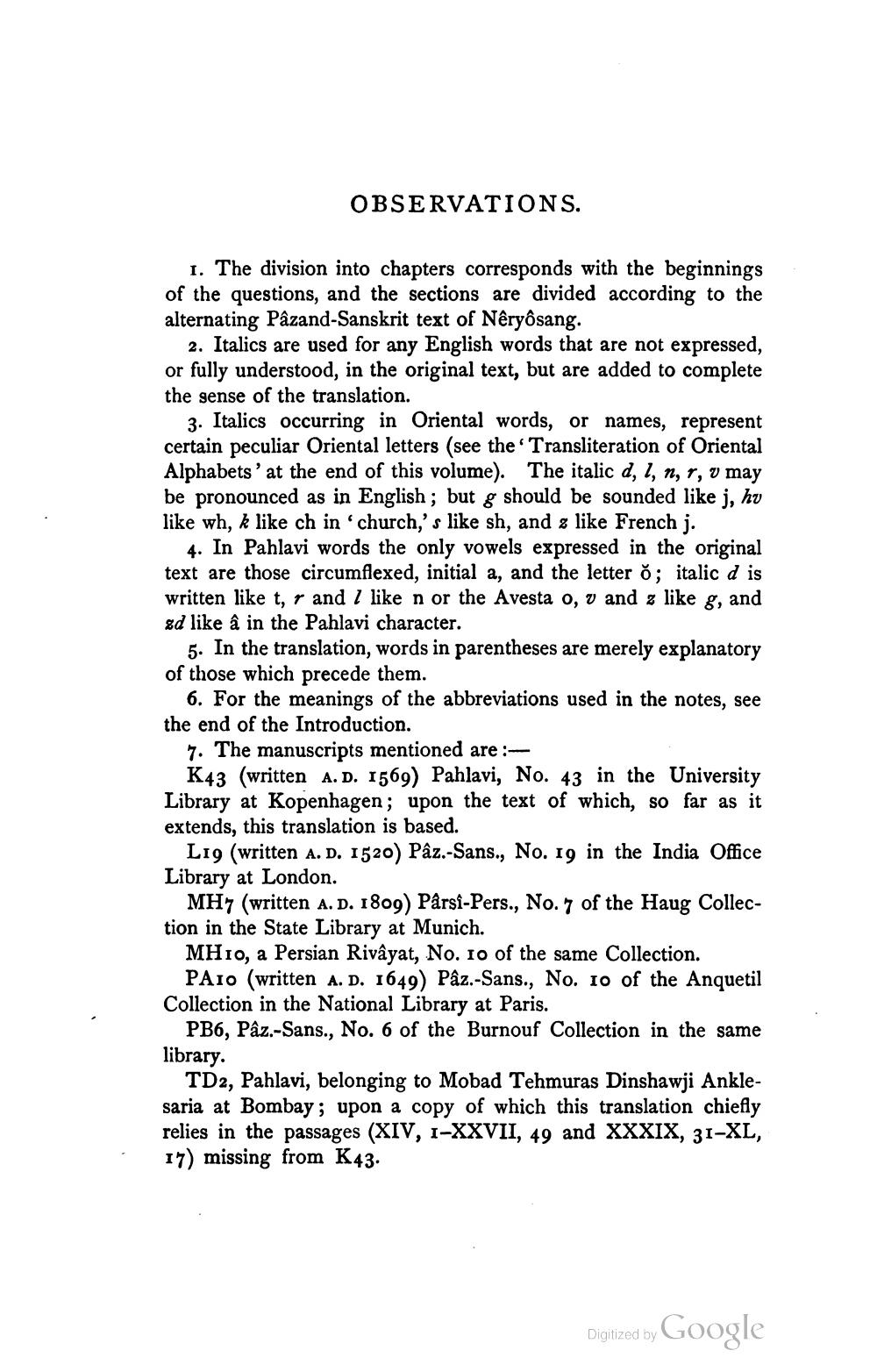________________
OBSERVATIONS.
1. The division into chapters corresponds with the beginnings of the questions, and the sections are divided according to the alternating Pâzand-Sanskrit text of Nêryộsang.
2. Italics are used for any English words that are not expressed, or fully understood, in the original text, but are added to complete the sense of the translation.
3. Italics occurring in Oriental words, or names, represent certain peculiar Oriental letters (see the Transliteration of Oriental Alphabets' at the end of this volume). The italic d, l, n, r, v may be pronounced as in English; but & should be sounded like i, hv like wh, k like ch in 'church's like sh, and , like French j.
4. In Pahlavi words the only vowels expressed in the original text are those circumflexed, initial a, and the letter o; italic d is written like t, r and I like n or the Avesta o, v and 2 like g, and &d like â in the Pahlavi character.
5. In the translation, words in parentheses are merely explanatory of those which precede them.
6. For the meanings of the abbreviations used in the notes, see the end of the Introduction.
7. The manuscripts mentioned are : K43 (written A. D. 1569) Pahlavi, No. 43 in the University Library at Kopenhagen; upon the text of which, so far as it extends, this translation is based.
L19 (written A. D. 1520) Pâz.-Sans., No. 19 in the India Office Library at London.
MH7 (written A. D. 1809) Pârşi-Pers., No. 7 of the Haug Collection in the State Library at Munich.
MH10, a Persian Rivayat, No. 10 of the same Collection.
PA10 (written A. D. 1649) Pâz.-Sans., No. 1o of the Anquetil Collection in the National Library at Paris.
PB6, Pâz.-Sans., No. 6 of the Burnouf Collection in the same library.
TD2, Pahlavi, belonging to Mobad Tehmuras Dinshawji Anklesaria at Bombay; upon a copy of which this translation chiefly relies in the passages (XIV, 1-XXVII, 49 and XXXIX, 31-XL, 17) missing from K43.
Digitized by Google




